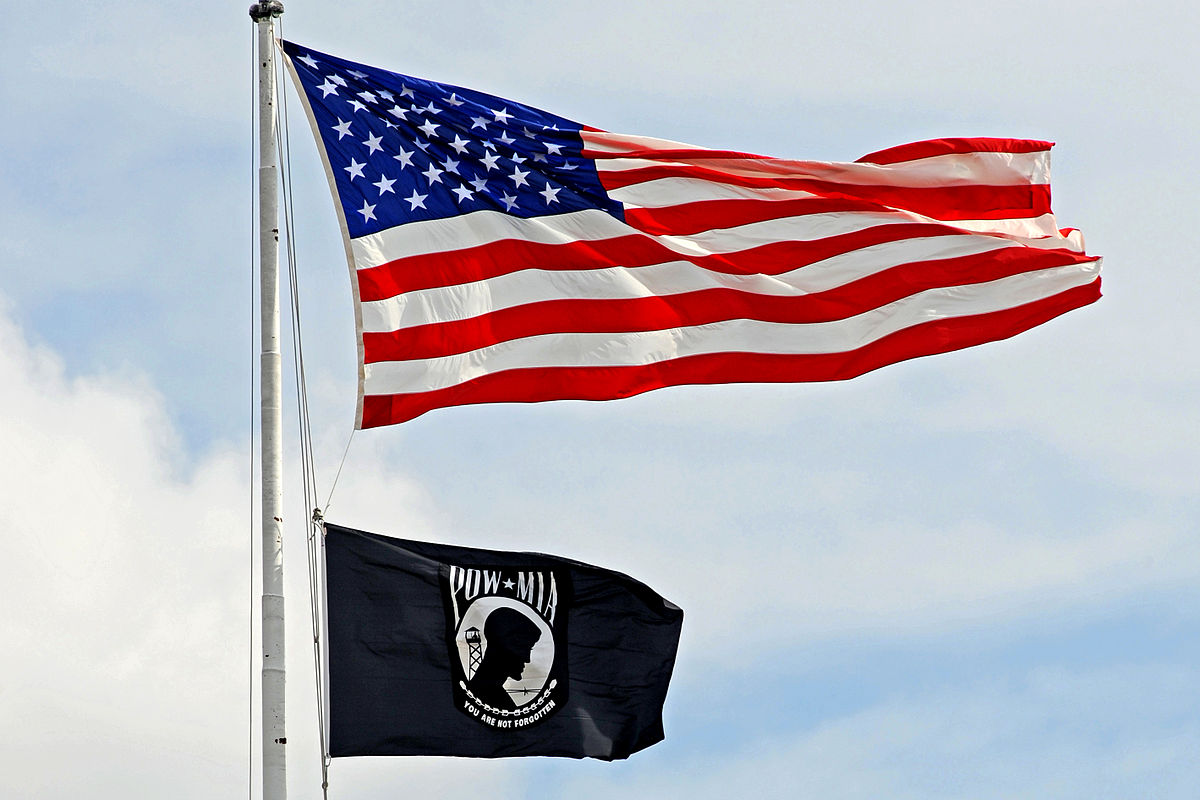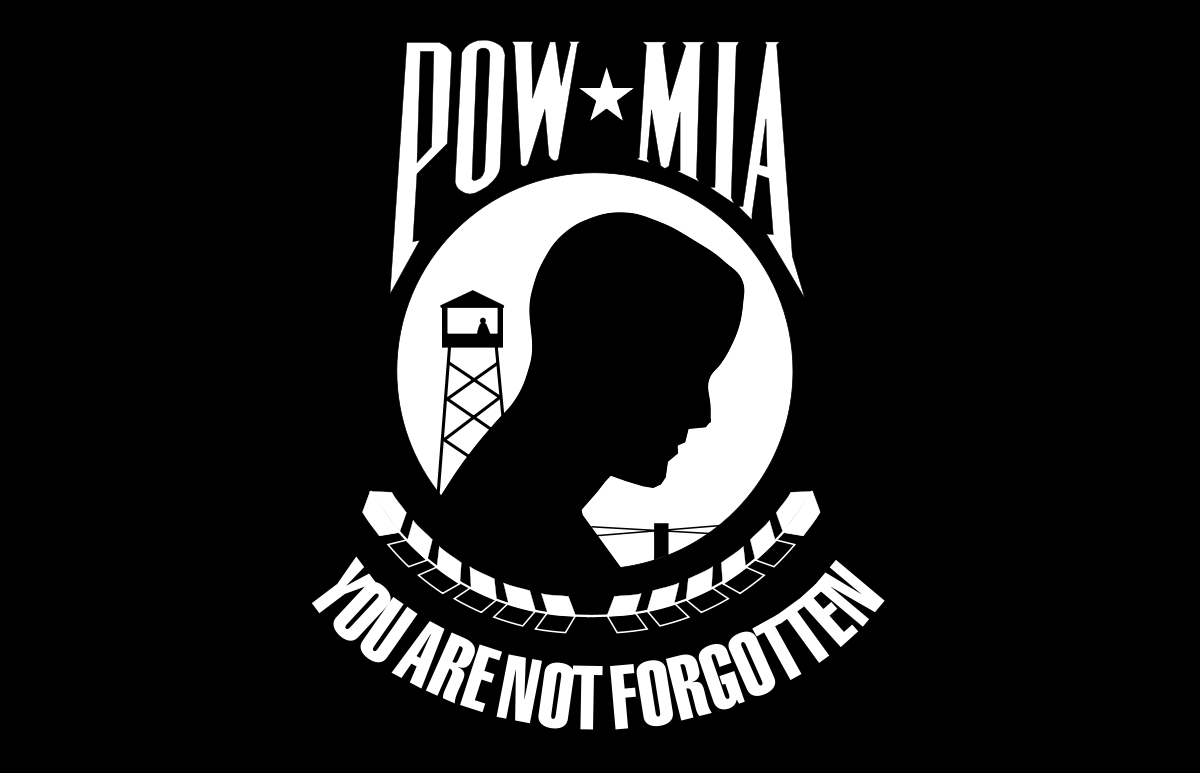The story behind the flag on National POW/MIA Recognition Day

National POW/MIA Recognition Day may be today and many Americans are accustomed to seeing the now familiar flag – the silhouette with white letters on a black background flying outside of courthouses, military properties, post offices, hospitals, and government buildings all year round. What is less familiar is the people who created the flag and their inspiration.
The creator of the flag who gets credit for coming up with the idea is Mary Hoff of Orange Park, Florida. Her husband, Navy Commander Michael Hoff was shot down during the Vietnam War in a flight over Laos in 1970 leaving his body unaccounted for. The pain and uncertainty left Mrs. Hoff questioning Washington, “What do I bury?” according to a statement she made to the Florida Times-Union. In response she was told that she could have all the artifacts from the shot down aircraft. With consideration for other families in her shoes who needed something more ceremonious, she reached out to Annin Flagmakers after reading an article in the Jacksonville, Florida Times-Union about Annin designing and manufacturing flags for the newer UN members. Her intentions were to create a flag that fellow members of the National League of Families of American Prisoners and Missing could be proud of and something more personable.
After reaching out to Annin, Mrs. Hoff was able to make contact with the Vice President of sales Norman Rivkees. He in turn contacted a local graphic designer by the name of Newt Heisley to design a flag that would represent the group. The job became personal for both Mrs. Hoff and Newt who happened to be a World War II veteran who flew missions in the Pacific. “I used to fly within range of the Japanese and wondered how I would hold up if I ever got captured,” Newt once said. The now familiar slogan, “You are not forgotten”, was born of that thought. He ultimately based the silhouette profile of the flag off of his son who was just returning home after becoming ill in Marine training. Mrs. Hoff claims the color scheme was her idea with the idea of not wanting a lot of colors. “I had seen a picture of one of those POWs wearing black-and-with pajamas” and because of that she said, “We need a stark, black-and-white flag.” Just like that, what was meant to be a flag intended for a small group of people became a national widespread appeal. So widespread that, “The distinction, historians and flag experts believe, of being the only non-national flag that any federal government anywhere in the world has mandated to be flown regularly according to Marc Leepson, author of Flag: An American Biography.
 Following the League’s approval Annin manufactured the flags for distribution. The image was never copyrighted and is now part of the public domain. Later in 1982, the POW-MIA became a regularly flying flag over the White House along with the American flag. And so, the flag has come to be seen as a symbol of a principle that doesn't just apply to those who fought and were lost in Vietnam, but to all members of the U.S. armed forces serving their country abroad. Let the slogan “You are not forgotten” live on today as National POW/MIA Recognition Day and every day as we remember those service men who have fought and were lost in battle and to all of the United States armed forces serving abroad.
Following the League’s approval Annin manufactured the flags for distribution. The image was never copyrighted and is now part of the public domain. Later in 1982, the POW-MIA became a regularly flying flag over the White House along with the American flag. And so, the flag has come to be seen as a symbol of a principle that doesn't just apply to those who fought and were lost in Vietnam, but to all members of the U.S. armed forces serving their country abroad. Let the slogan “You are not forgotten” live on today as National POW/MIA Recognition Day and every day as we remember those service men who have fought and were lost in battle and to all of the United States armed forces serving abroad.
